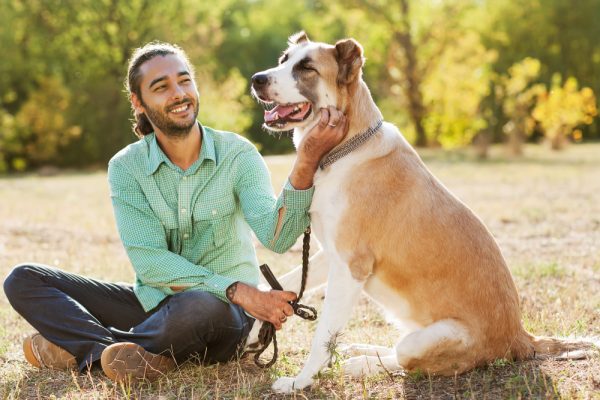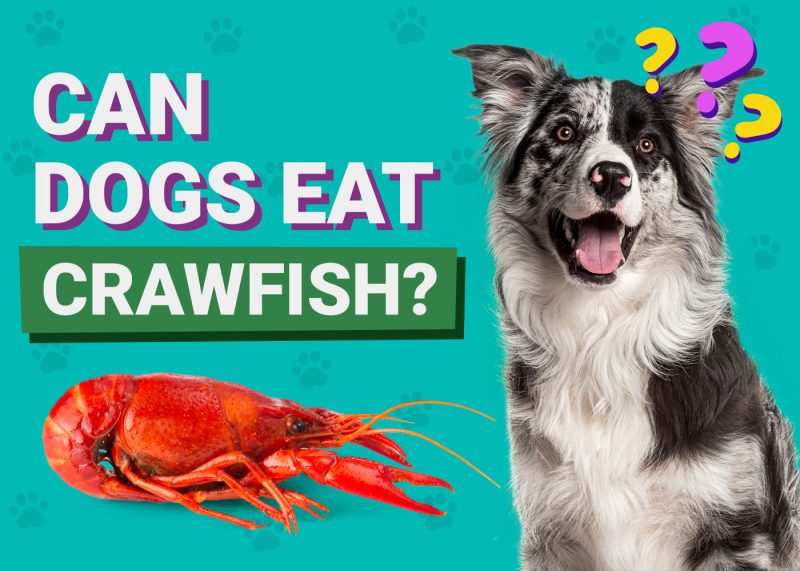In this article
View 2 More +We know the sight of your little dog hopping on three legs tugs at your heartstrings. You want your dog to have the best in life, but when the walks that bring them so much joy appear to cause discomfort, you wonder if you’re doing the right thing. In most mild cases, you should still walk a dog with a luxating patella. However, there are some circumstances where your dog needs rest and should not be walked.
Before diving in, we want to ensure you understand what happens in dogs with luxating patellas. The kneecap or patella forms part of the knee joint and slips in and out of place. When it is out of place or luxated, your dog can’t walk properly and becomes lame on the leg. Depending on the case, the lameness can last days or resolve within seconds.
Luxating patella is graded from 1 to 4, with grade 1 being a very mildly affected, almost asymptomatic dog. Grade 4 involves a permanently luxated patella and a severely affected dog. The disease is much more prevalent in small-breed dogs.
Luxating patella can also occur in large-breed dogs and is usually more concerning in these breeds. It commonly occurs due to a combination of genetics and development leading to malformations in the limb, but sometimes dogs can develop a luxating patella secondary to trauma.

Importance of Walking Your Dog

Walking your dog has benefits, and you never want to stop your dog from enjoying their walk unless absolutely necessary. Dog walking provides your dog with much-needed exercise and mental stimulation. The smells they encounter intrigue their minds and even provide social communication through scent marking.
A dog with an active mind and body is less likely to engage in problematic behaviors and will sleep well at night. Walks are a great bonding experience for you and your dog. Dog walks also provide some physical benefits. Exercising your dog is a critical factor in maintaining a healthy weight.
Carrying excess weight puts unnecessary pressure on the joints. Walking also keeps the joint fluid moving and helps your dog maintain mobility. The exercise strengthens the muscles, which can be very important in managing the luxating patella, with a focus on strengthening the muscles of the hindlimb.
Finally, pups cooped up inside may wait too long to use the bathroom, which can lead to problems. Going on walks can help your dog go more regularly, allow you to monitor their bodily functions, and look for health issues like constipation, diarrhea, and urinary tract infections.
- Bonding
- Mental stimulation
- Social interactions
- Tires them
- Behavioral benefits
- Weight control
- Mobility and strength
- Urination and defecation
High Impact vs Low Impact Exercise
Of course, the type of exercise should be considered when deciding whether your dog should participate in activities. High-impact exercises involve large forces acting on the joints, ligaments, and tendons.
Unfortunately, high-impact activities can lead to injuries and make existing joint issues worse. Low-impact exercises are gentler on a dog’s joints and are preferable for dogs with joint problems like luxating patellas.
- Chasing balls
- Sudden stops and turns
- Jumping
- Running
- Leash walking
- Swimming
- Obedience drills
- Nose work
- Dog yoga
When Not to Walk Your Dog

As you already know, there are some circumstances when your dog needs a rest, and you should avoid walking them. In these cases, a period of rest usually helps your dog recover. However, we want your dog to have a good quality of life, including experiencing all the benefits of low-impact exercise, so this rest period is not feasible long-term.
You should not take your dog on walks if there is anything worse than a transient limp. For dogs with grade 1–2 luxating patella, the patella usually slips back into place with minimal discomfort for your pup. They will continue their walk like nothing ever happened. However, in more severe cases, dogs can be in pain with a limp that does not resolve quickly.
Suppose your dog is not themselves, constantly limping, vocalizing, has trouble jumping up, or has abnormal posture. In that case, they are showing signs of pain, and a period of rest and re-evaluation of their luxating patella is in their best interests. Grade 3- 4 luxating patellas often cause more severe ongoing signs.
Over time, even mild cases of luxating patella can lead to joint damage, arthritis, and ongoing signs of pain. If your dog has undergone surgery for a luxating patella, they will need a period of strict rest. This is followed by slow physical rehabilitation before they can return to their normal activities. Make sure you follow your vet’s instructions to a tee to ensure the best outcome for your friend.
If you need to speak with a vet but can't get to one, head over to PangoVet. It's our online service where you can talk to a vet online and get the advice you need for your dog — all at an affordable price!

Luxating Patella Treatment

Your vet will discuss the best options for your dog based on factors like age, general health, and the grade of the luxating patella. Their treatment plan could incorporate some of the following aspects.
1. Pain Relief
If your dog is experiencing pain from the patellar luxation or secondary joint changes, your vet will prescribe pain relief. Medication can be short-term or long-term if needed. Nonsteroidal anti-inflammatories (NSAIDs) are often used, but other medications can also be prescribed. If your pet is on long-term pain relief, you should be aware of any side effects to watch for.
2. Weight Loss
If your dog is deemed overweight or obese, weight loss is an integral part of their journey toward better joint health. Even if your dog is a healthy weight, if they aren’t exercising, you may need to feed them a little less because they aren’t burning as many calories.
The first step for dogs needing to lose weight is to reduce their calorie intake. You can do this by feeding them less or switching to a lower-calorie dog food. You can even get weight loss diets with additional ingredients for joint support, like Hill’s Prescription Diet Metabolic + Mobility j/d Chicken Flavor Dry Dog Food. You can use a body condition score to track your dog’s progress.

3. Joint Support
Since luxating patella predisposes dogs to arthritis in the knee, joint-supporting medications and supplements can help keep the limping under control. Medications like Adequan can help protect the joints.
Some supplements help protect the joints and reduce inflammation, like Nutramax Cosequin Hip & Joint with Glucosamine, Chondroitin, MSM & Omega-3’s Soft Chews Joint Supplement for Dogs.
4. Physical Therapy
Physical therapy encompasses a few types of intervention. Cryotherapy or “cold therapy” uses ice packs to reduce inflammation with acute injury and after surgery. Massages and hot packs can be recommended during the healing process.
Physical therapy can also strengthen muscles, either during surgery rehabilitation or as part of a treatment plan for mild cases of luxating patellar. Passive range of motion, hydrotherapy, uphill walking, three-legged standing, and other exercises can help strengthen the hindlimbs.

5. Surgery
Surgical correction of the luxating patella can be performed. It could be recommended in some dogs with a grade 2 patellar luxation and most dogs with a grade 3–4 patellar luxation. There are a few procedures that can help; however, interventions that don’t harm the joint cartilage are preferred.

Final Thoughts
If your dog has low-grade patellar luxation, you should keep walking them. However, to reduce the strain on their joints, you should restrict their activity to low-impact exercises as much as possible. These exercises will improve your dog’s quality of life, help build their muscles, and keep their waistline slim.
Some dogs experience pain from their luxating patella and may not be able to walk well. Painful dogs need a period of rest to help them heal. If your dog is frequently incapacitated due to their luxating patella, further interventions like physiotherapy, joint support, pain relief, or even surgery may be necessary. In any case, your vet should manage your dog’s condition as it changes over time.
Featured Image Credit: Subhasish Bose, Shutterstock


















